‘Fascination of Science’ Photo Series Focuses the Lens on Brilliant Minds
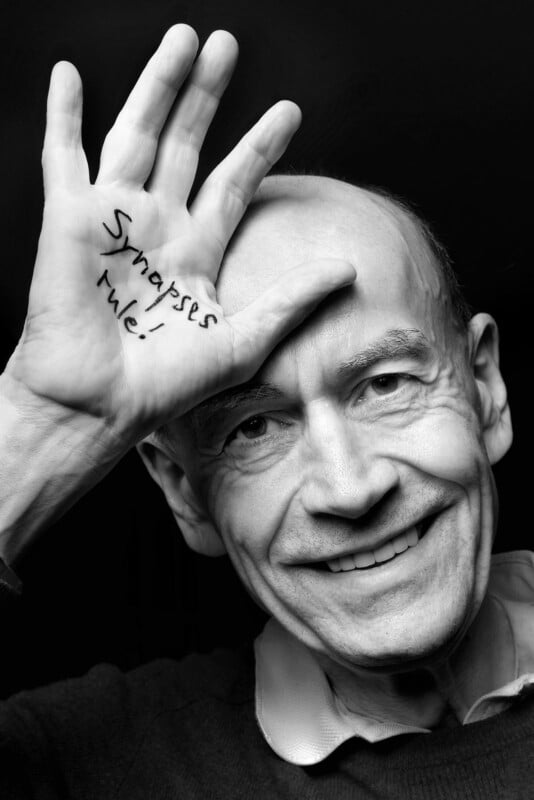
Famed German photographer Herlinde Koelbl is well known for her award-winning portraits, including those of influential political figures. One of Koelbl’s many books, Fascination of Science, turns the lens toward renowned scientists and Nobel Prize winners.
Fascination of Science is not only a book but also an international traveling exhibit. Started in 2020 in Berlin, Germany, the most recent stop on the tour is the University of California Berkeley, where Fascination of Science is on display until October 16.
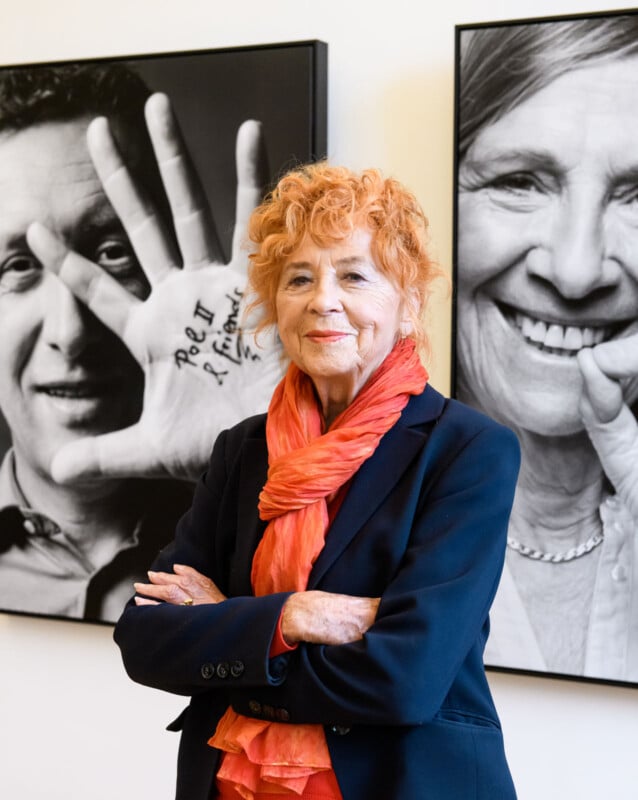
PetaPixel reached out to Koelbl to learn more about her work, including her use of black-and-white photography for Fascination of Science.
“I chose black and white because the focus should be on the face and the statement written on the palm. Colors would only have distracted,” Koelbl says.
The statements written on the palm that she references are words that each portrait subject wrote on their hands to help share a message that they are passionate about. Many put words, formulas, or illustrations related to their prize-winning research on their hands, while others delivered messages of inspiration and hope.
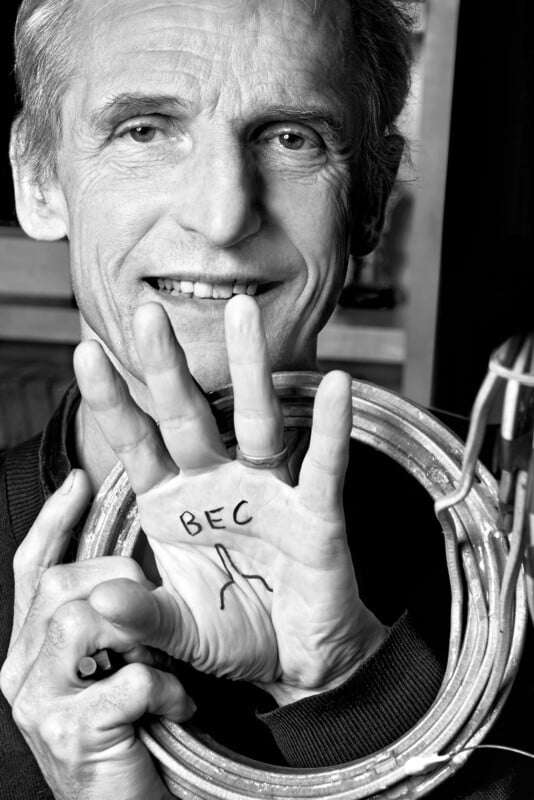
Koelbl is exceptionally passionate about science and believes her photos can help showcase the importance of scientific progress. She also wanted to help highlight the diversity within the scientific field, ensuring that young students could see people like them doing great things in the field and pushing humanity’s achievements and understanding further.
Koelbl also sent PetaPixel some background information about her project, including her motivation and artistic vision.
“I visited academic hotspots of scientific research worldwide, interviewing and photographing approximately 60 top international scientists and many Nobel Laureates. The scientists outlined their research, adding in personal experiences of their path to the top,” Koelbl writes.
“The different biographies show that science is a global subject in which people can follow their own course independently of their origins or character if they are driven by a common interest: curiosity and a thirst for knowledge.”
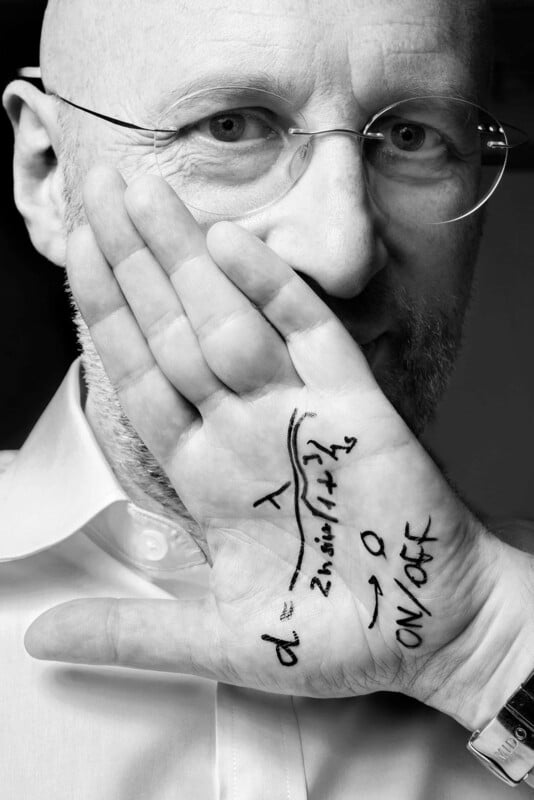
“One of my main intentions creating this project was to spark an interest in science, especially in young people. Sometimes they tend to choose to study economics or IT. Because that seems to be the fastest route to money. They could — or better should study science. Because that is our future, our most important resource,” the photographer explains.
Koelbl has also noticed that many portraits of scientists follow a typical formula, showing scientists in lab coats surrounded by scientific instruments. “I thought this was boring and I did not want to produce pictures like that.”
To create something fresh and unique, Koelbl “asked them to write the formula of their most important research or their philosophy on their hand. I did not give orders. The only instruction that was mandatory, was to put their hand close to the face. They could do whatever they wanted. This has a playful element that reflects the child-like urge to do research, which researchers must never lose if they want to be successful.”
Her subjects enjoyed this fun approach. “You might have never seen these scientists like this before,” Koelbl remarks. Hands tell a powerful story and help people remember all the important work they have done with their hands and the journey that ultimately led them to their careers as influential and impactful scientists.
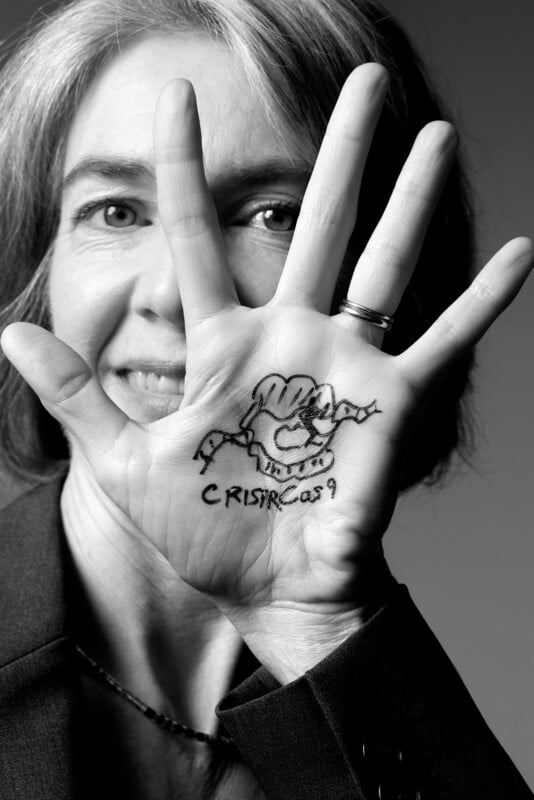
Koelbl learned so much about science and the scientific process during the course of her project, including that “doing research is more like climbing Mount Everest.”
“Just like climbing Mount Everest, the life of a scientist may be sometimes quite draining and exhausting with long working days and hardly any weekend. But just like the name of the mountain climber who climbed a summit for the very first time — the name of scientists that made groundbreaking discoveries will also always be remembered,” says Koelbl. “They made history and we learn about them at school. Theories are named after them, streets, buildings, and organizations. And the biggest reward for scientists who reach the summit is maybe this feeling of Euphoria, which is elevating and priceless. They will never forget it. It will be indelibly burned into their hearts.”
Something else that many scientists told Koelbl is that they feel a deep connection between science and art.
Koelbl says, “Art and science are driven by the human curiosity to understand the world. Another striking similarity is the creative process. Artists and scientists alike engage in a process of experimentation. Thinking out of the box and pushing boundaries, free-thinking without borders, are the main ingredients for the creative and innovative process.”
“Art and science have many characteristics in common. Curiosity, perseverance, creativity, courage, dedication, and discipline. And both can change the whole world with their creations,” Koelbl adds.
Herlinde Koelbl was recently a guest on the podcast Science by New Books Network. In the episode, she explains more about her book, Fascination of Science, and some of the incredible scientists she interviewed and photographed.
![]()
More of Koelbl’s work is available on her website and her book, Fascination of Science, is available from MIT Press.
Image credits: All images courtesy of Herlinde Koelbl